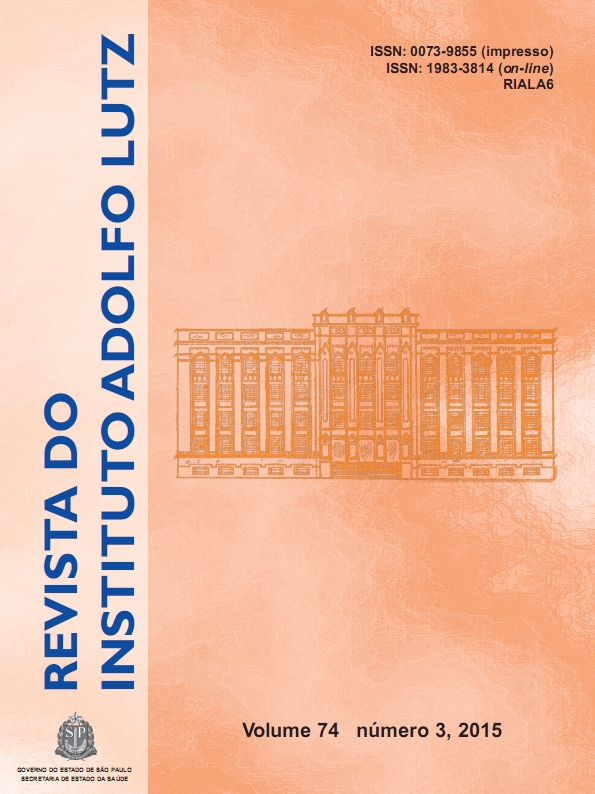Abstract
The pharmacopoeia monograph for the measles/mumps and rubella (MMR) triple vaccine demands to perform the validation of the potency assay by using the suitable reference material (MR). Aiming at establishing the first work MR (MRT) for the MMR triple vaccine, a national collaborative study was performed with the participation of the two unique national institutions working on the vaccine potency evaluation test, the Imunobiological Technology Institute (Bio-Manguinhos, national manufacturer) and the National Institute for Quality Control in Health. The candidate product (cMRTBio) prepared by the manufacturer was evaluated by the participant laboratories by employing the respective in-house methodologies for determining the potency. The cMRTBio was considered suitable as in-house MR, according to the specifications based on the normative compendia, being the intra-assay (< 5 %), inter-assay
(< 10 %) and between laboratories variations (< 10 %) below the acceptable limits, and the estimate potency (log10 CCID50/DH) in 3.72 for measles, 4.80 for mumps and 3.70 for rubella. This study reflects the commitment of the unique national MMR vaccine producer to the public health, describing the expansion of technology, the compliance with international guidelines and the careful quality control, leading to the national self-sufficiency in the vaccine production.
References
1. Farmacopéia Brasileira, 5. Ed. Brasília: ANVISA, 2010.2.
2. OMS. Organización Mundial de La salud. Boas práticas da OMS para laboratórios de controle de qualidade de produtos farmacêuticos. 2010 [acesso 2015 Ago 08]. Disponível em: [http://apps.who.int/medicinedocs/documents/s18681pt/s18681pt.pdf ].
3. Brasil. Ministério da Saúde. Agência Nacional de Vigilância Sanitária. RDC no 17, de 16 de abril de 2010. Dispõe sobre as boas práticas de fabricação de medicamentos. [acesso 2015 Ago 08] Disponível em: [http://brasilsus.com.br/legislações/rdc/103711-17.html].
4. World Health Organization – WHO. WHO Expert Committee on Biological Standardization. Meeting. WHO Expert Committee on Biological Standardization: Fifty- fifth Report. World Health Organization, n. 932; 2004.
5. International Laboratory Accreditation Cooperation – ILAC. Guideline for the in-house production of reference materials. LGC/VAM/1998/040, 1998.
6. World Health Organization – WHO. Technical Reports Series, Recommendations for the preparation, characterization and establishment of international and other biological reference standards. n. 932, 2006.
7. Minor P. International reference preparations for standardization of biological medicinal products. Bubdesgesundheitsbl.2014; 57(10):1145-51. [DOI: 10.1007/s00103-014-2027-z].
8. Brasil. Agência Nacional de Vigilância Sanitária. Agenda Nacional de Prioridades em Vigilância Sanitária. Núcleo de Educação, Pesquisa e Conhecimento – NEPEC/ANVISA. Diário Oficial [da] República Federativa do Brasil. Brasília, DF, 2011 [acesso 2015 Out 11]. Disponível em: [http://portal.anvisa.gov.br/wps/wcm/connect/3048f900474576208428d43fbc4c6735/Prioridades_de_Pesquisa_em_Vigilancia_Sanitaria.pdf?MOD=AJPERES].
9. Montgomery DC. Design and Analysis of Experiments. 7. ed. New York: John Wiley & Sons; 2008: 680.
10. Shapiro SS, Wilk MB. An analysis of variance test for normality (complete samples). Biometrika.1965; 52:591-611. [DOI: 10.1093/biomet/52.3-4.591].
11. World Health Organization – WHO. Immunization surveillance, assessment and monitoring. 2012 [acesso 2014 Ago 15]. Disponível em: [http://www.who.int/immunization/monitoring_surveillance/en/].
12. Pinheiro J, Bates D. Mixed-Effects Models in S and S-PLUS (Statistics and Computing). 1 ed. Springer. 2009; 530 p.
13. World Health Organization – WHO. WHO Expert Committee on Specifications for Pharmaceutical Preparations: forty-first report. World Health Organization, n. 943, 1-156, 2007.
14. World Health Organization – WHO. A WHO guide to good manufacturing practice (GMP) requirements. Part 2: Validation. Chp. 15. Validation of analytical assays. Geneva; 1997 [acesso 2015 Jul 20]. Disponível em: [http://apps.who.int/iris/bitstream/10665/64465/2/WHO_VSQ_97.02.pdf ].
15. World Health Organization – WHO. Manual for the establishment of the national and other secondary standard for vaccines. Geneva, World Health Organization, WHO/IVB/11.03; 2011.
16. Joseph L, Velayudhan A, Charuvila MV, Vayalappil MC. Reference biomaterials for biological evaluation. J Mater Sci Mater Med.2009; 20(1:S9-17). [DOI 10.1007/s10856-008-3522-2].
17. Forsey T, Health Alan B, Mino PD. A European collaborative study to assess the proficiency of laboratory estimates of potency of live measles, mumps and rubella tri-valent vaccines. Biologicals.1993; 21(3):239-49. [DOI: 10.1016/j.vaccine.2011.09.017].
18. World Health Organization – WHO. The Mumps Vaccine. 2009 [acesso 2014 Jul 10]. Disponível em: [http://www.who.int/vaccines-diseases/diseases/mumps_vaccine.shtm].

This work is licensed under a Creative Commons Attribution 4.0 International License.
Copyright (c) 2016 Instituto Adolfo Lutz Journal
